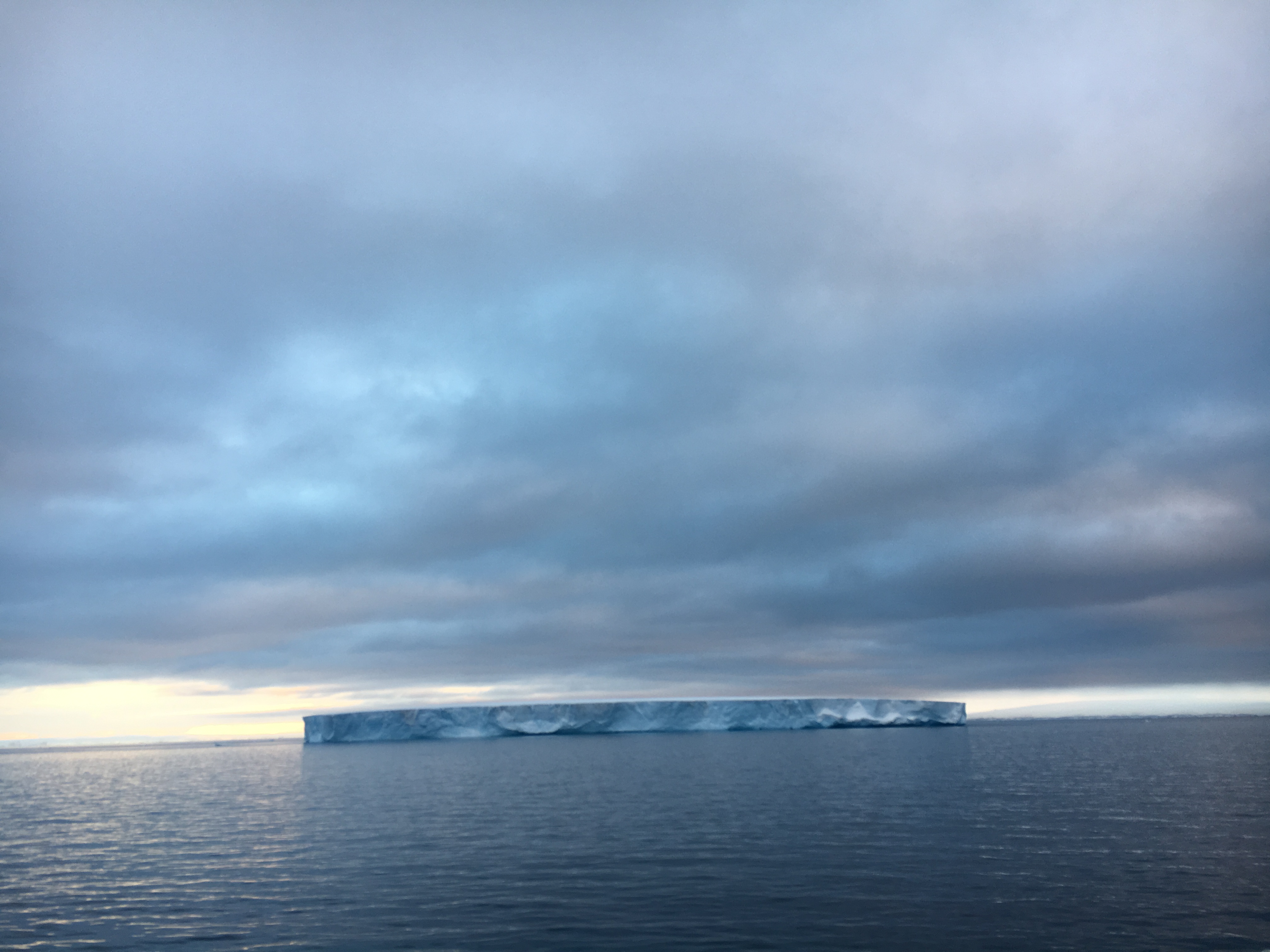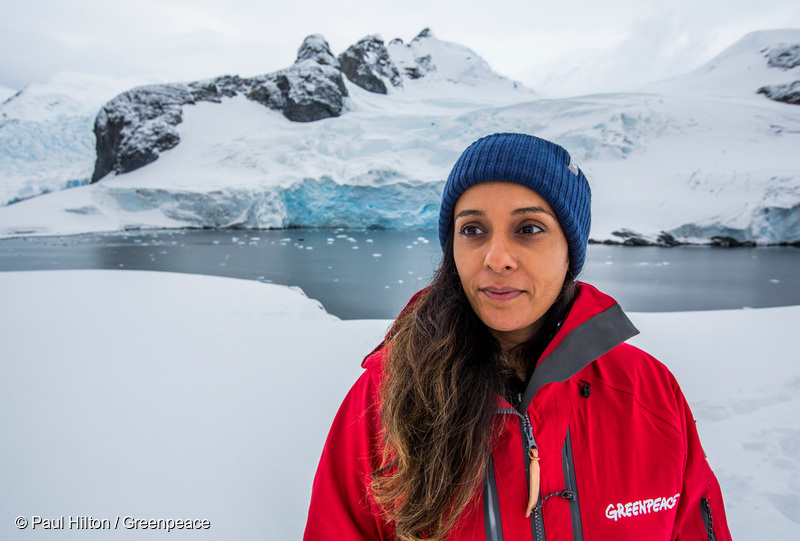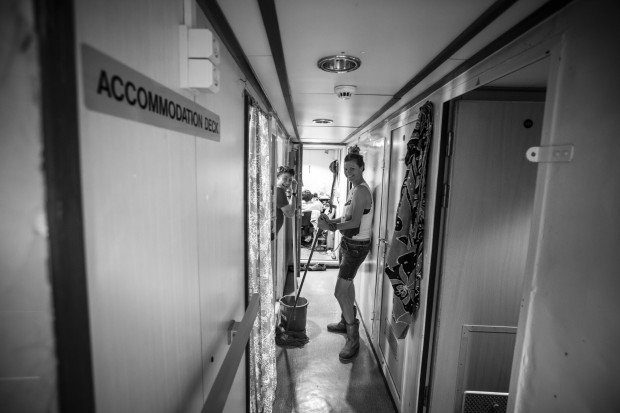My Journey to Protect the Antarctic


I’m writing this on International Women’s Day, on a Greenpeace ship in Punta Arenas, Chile, getting ready to sail back to the Antarctic Ocean to bear witness to the threats it’s facing from the krill Industry.
It feels amazing to be on this ship today as part of a campaign to secure the largest protected area on Earth – an Antarctic Ocean Sanctuary – especially because up until recently women weren’t allowed to work in Antarctica. It was thought that the conditions were too extreme for us, or that we would get bored because there are no shops there. So, today, it feels amazing to be one of eight women who are sailing to the Antarctic Ocean with Greenpeace to make history.
Having joined Greenpeace 4 years ago, I’ve realised that protecting our planet requires everyone and every skill, to put enough pressure on large industries and governments. Only then can we achieve ambitious goals like creating a sanctuary in the Antarctic’s Weddell Sea – an area which is 5 times the size of Germany. We need people in our offices, on the ground, in their local communities, at home and on our ships, all working together with their own unique skills. This is how I ended up on the Greenpeace ship as part of a three-month expedition to the Antarctic Ocean.
In January, we deployed submarines deep into the Antarctic Ocean so scientist Dr Susanne Lockhart and marine biologist John Hocevar could explore the seabed and identify vulnerable marine ecosystems. In February, we showed the world what needs to be protected through beautiful imagery of the Antarctic Ocean and its wildlife, and explained the threats it faces from climate change.

And now, we will bear witness and expose the krill fishing industry that plans to expand further into the Antarctic Ocean. This ocean is already suffering the impacts of climate change – we cannot let big industries become another threat.
The Antarctic is one of the last remaining places on Earth that we haven’t destroyed for greed and money. Its ocean is home to beautiful penguins, whales, seals and the colossal squid (which has eyes the size of basketballs). The Antarctic is a vast natural art-gallery, full of jaw-dropping icebergs and mountain regions.
And importantly, the health of the Antarctic Ocean affects us all – the oceans regulate the climate, provide food for millions of people around the world, and produce over 50% of the oxygen in our atmosphere: every second breath we take comes from the world’s oceans.
As someone who hugely respects and appreciates nature, I started the expedition in January with a pretty clear intellectual understanding of why this ocean should be protected. But when I actually saw the beauty and the wildlife, I developed a new emotional understanding of why the ocean must be protected.

When I saw the beautiful whales I knew they were there to spend months feeding on krill before leaving for warmer waters. What they were eating now would have to sustain them and their young for up to three months. I knew many of the whales would also be pregnant.
I loved seeing the penguins waddling and sliding around on their bellies. But watching them as they swam for hours upon hours, with such strength and determination to bring food home to their chicks, gave me a newfound appreciation for how hard they work to survive.
My favourite moment was when one little intrigued Adélie penguin waddled straight up to me and looked me up and down and around. He was so friendly and curious. It was a beautiful moment symbolising how these creatures have no reason to fear us and that’s how it should stay.

At that moment I realised, there was no way I could stand by and let the krill industry threaten these brilliant creatures, nor the harmony or the beauty that exists in this magical place. To me, greed does not justify the destruction of something so beautiful and balanced, especially when the consequences of this destruction are so clear.
So I’m now on board for the final part of our expedition to take action. Along with others, I will bear witness to the threat the krill industry poses. I know we’re backed by millions of people around the world who have called for an Antarctic Sanctuary.
Our expedition is so important because it will help expose the threats that are facing this beautiful ocean. This evidence, as well as the research gathered by scientists in January and February, will bolster our case to the Antarctic Commission in October 2018. Here the krill industry is a significant lobby, capable of undermining efforts to create ocean sanctuaries. We need to lobby harder to convince the Antarctic Commission of why an expansion of industrial fishing could be devastating.

Being an activist means being active – doing something about the things we care about. We are all activists in our own way – whether we sign a petition, chip into a campaign, lobby politicians, conduct research, take photographs and video footage, or stand on the frontlines. If we stand alone, it can be hard to make a difference. But when we do all of this together, our impact is huge.
I feel very honoured to be part of this expedition, very determined to protect this beautiful place and the beautiful creatures that live here, and very positive about our hopes to create the largest sanctuary on Earth.
Before we reach the Antarctic Ocean we need to make the journey across the Drake Passage: an ocean passage known to all sailors as one of the most treacherous seas on Earth… but there’s no way I’m getting seasick on International Women’s Day!




